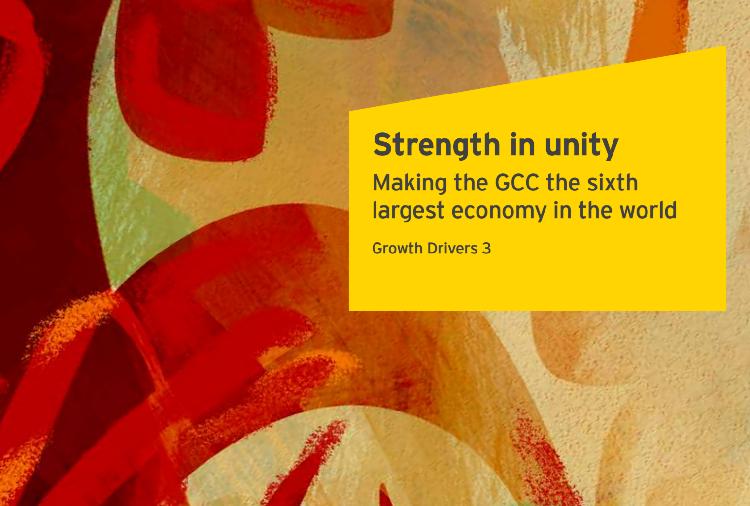
GCC could become the world’s sixth largest economy by 2030: EY
According to EY’s latest Growth Drivers report ‘Strength in unity’, if the GCC were to become one single market instead of six separate ones today, it would be the ninth largest economy in the world today – similar in size to Canada and Russia and not far from India. If it is able to keep growing at an annual average of 3.2% for the next 15 years, it could become the sixth largest economy in the world by 2030, hovering just below Japan.
Gerard Gallagher, MENA Advisory Leader, EY, says:
“GCC governments are facing a decisive moment. With oil price falling, they have to accelerate the creation of growth drivers that do not rely on oil revenues. They are now exploring options and taking decisions such as opening up to foreign investors, ending subsidies, introducing taxation, optimizing costs and cutting jobs in the public sector. There are signs that serious change has begun. However, these reforms could be less disruptive and more effective as part of a wider push towards rekindling and modernizing the drive towards a single GCC market. That would bring the benefits of scale and efficiency to the diversification drive, and strengthen the most productive parts of the private sector by introducing more competition and more jobs.”
Value of growth through integration
EY developed an integration model to measure the economic impact of removing the remaining non-tariff barriers that hold back trade, investment and productivity. The analysis illustrated that removing obstacles to trade and investment would boost the GCC GDP by 3.4% or US$36 billion, with 96% of the gain coming from the removal of bureaucratic barriers to efficiency. The benefits would be spread across all six economies, with the strongest gains in the UAE, Saudi Arabia, Bahrain and Oman, with increases in GDP between 3.5 % and 4.1% in the four countries.
The report highlighted that the next phase of GCC integration needs to address and facilitate change in three key areas:
- Trade: transform the customs union into a modern, technology-enabled single market that addresses the bottlenecks to cross-border business and optimize costs in the long run
- Foreign investment: Streamline and align approaches to foreign investment and company ownership regulations to increase the size and competitiveness of the entire private sector
- Institutions: Build GCC institutions that have the capacity to sustain momentum and push against vested interests
A fully functioning single market would reduce overall trade costs in the GCC, boost productivity and encourage higher levels of intra-regional trade. The far greater effect, however, would be to boost long-term productivity levels by increasing competition in the private sector, attracting significantly higher levels of foreign investment and creating more streamlined and effective institutions to enable world-class business.
Next steps
Phil Gandier, MENA Transactions Leader, EY, says:
“There are immediate steps that the GCC could take that would optimize the existing levels of cooperation, bringing significant economic gains to each of the member countries, while allowing them to focus separately on creating the incentives that will make them most attractive as investment locations. Pinpointing and resolving these barriers might not sound like integration – but it would be a major step forward to leveraging the GCC’s common strengths to the benefits of each country. A first step would be to work with the private sector to identify the top ten barriers to doing business across the GCC. These would include specific obstacles at borders that slow the free movement of goods, outdated laws that don’t reflect the realities of the digital world and the multiplicity of regulations relating to business in each country that make compliance so hard for cross-border investors.”
The most significant impact of GCC integration comes not from boosting intra-GCC trade, but from making the region’s trade and investment relations with the rest of the world easier. Creating a single market with foreign investment regulations that are both streamlined and aligned would make it more attractive for global companies to invest heavily in the GCC market as a whole.


























